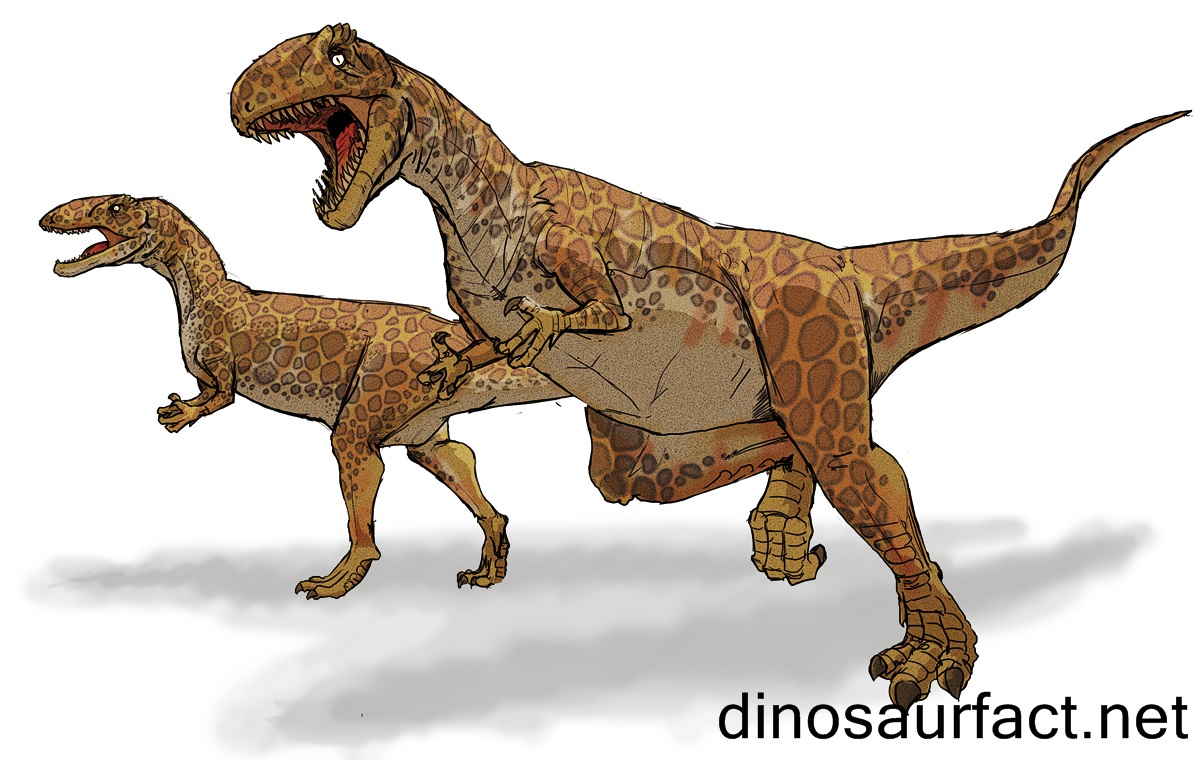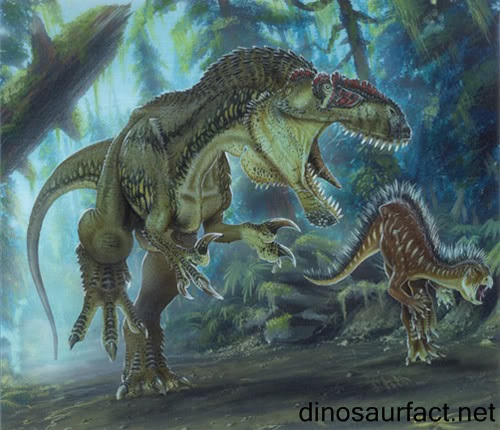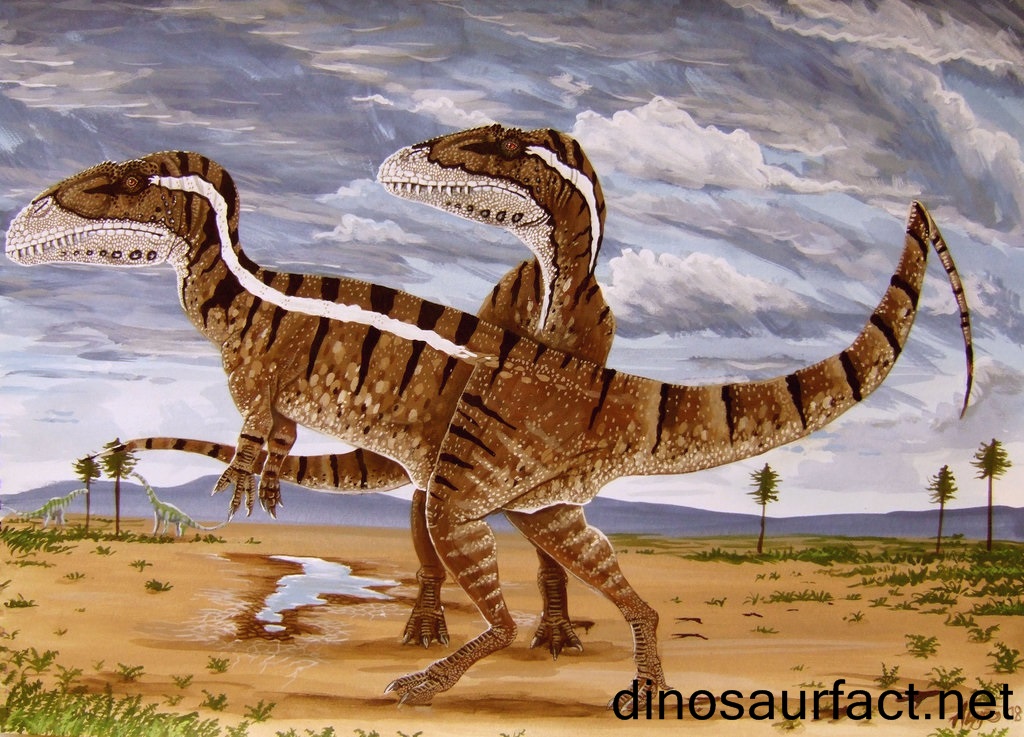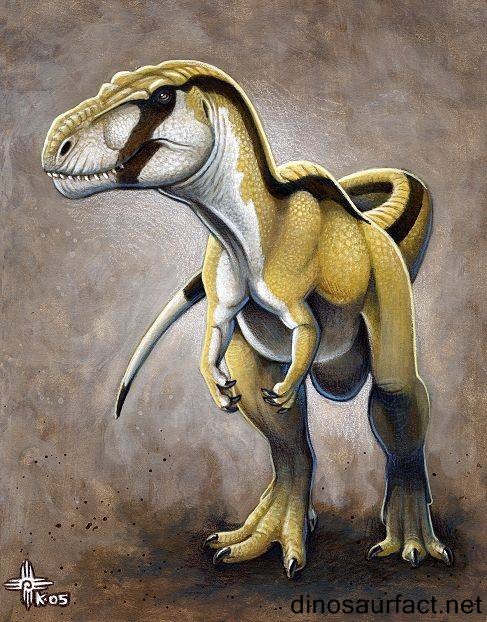 Click to visit the previous dinosaur bio
Click to visit the previous dinosaur bio
 |
|
 |
|
Kingdom: Animalia
Phylum: Chordata
Class: Sauropsida
SuperOrder: Dinosauria
SubOrder: Theropoda
Family: Megalosauridae
Genus: Megalosaurus
 |
|
 |
|
 |
|

Megalosaurus (pronounced Meg-ah-low-sore-uss) or ‘Great Lizard’ was reigning the planet around a hundred and eighty million years ago. Their fossils were first discovered in England. However there also has been excavations of similar fossil types and they have been included under Megalosaurus, but the certain remains from Megalosaurus come from Oxfordshire’s Late Middle Jurassic.
- Megalosaurus fossil was discovered in European country in 1676 and named by William Buckland in 1824.
- In honor of Mr. William Buckland, in 1827 Gideon geologist assigned the species name Megalosaurus bucklandii thereto.
With the advent of theropod dinosaur started a new episode of fossilology, with countless debates rising on the naming with the word ‘saurus’ as they weren't lizards to lifetimes of fascination about these giant creatures who once set their footprints on the planet. The primary theropod dinosaur fossil fragment was but discovered approach back in 1676 from a sedimentary rock-quarry in Oxfordshire. Only bone-drawings are found on this date, but Robert Plot described it as a part of femur that he declared to be of that of a giant human. He was citing the reference of giants mentioned in the Bible hence in 1763, the bone was named ‘Scrotum humanum’ by Richard Brookes as he observed an accurate resemblance of the crassy end of the bone to a human scrotum, and the theory was however never accepted. The International Centre For Zoological Nomenclature (ICZN) insists that Megalosaurus is the correct and valid name for the genus. Buckland carried on an in-depth research with the fossils he found out. And with that he wrote a paper named ‘Notice on Megalosaurus or Great Fossil lizard of Stonesfield’.
The earlier depictions of Megalosaurus however suggested that the animal was a quadruped in nature rather than the bipedalled that everyone is familiar with. The ‘Crystal Palace of London’ showcases a Megalosaurus reconstruction which is however believed to be grossly inaccurate as it exhibits the Megalosaurus to be fighting with Iguanodon (second dinosaur ever discovered). Edward Riou has drawn this landmark exhibition. The drawing however is considered to be grossly inaccurate on a scientific basis. Iguanodon, a herbivore, would be least interested to bite off a chunk of flesh from the Megalosaurus, something that has been visualized in the painting.
By the end of nineteenth century there had been further theropod discoveries all over the world and this resulted in accurate reconstructions. With modern standards these were still considered inaccurate but still Megalosaurus was then depicted as a large theropod but this time it was bipedalled and probably the largest one active in Jurassic Europe.
Megalosaurus fossils have often been associated with marine deposits. This has led to a number of hypotheses on the habitat and lifestyle of this giant theropod. Megalosaurus , like other theropods have hunted inland and have been co-incidentally founded on the coasts. Others suggest that these giants had taken advantage of certain pleiopods that have resting on the land. Another hypothesis is of the opinion that the Megalosaurus were more like a beach comber which scavenged on dead fish and animals which lay along the coast. While the most accepted hypothesis suggests that Megalosaurus was a large theropod which needed to utilize every food source especially as history suggests that higher ocean levels during Jurassic age left every small available land mass for the support of terrestrial animals. Hence Megalosaurus was compelled prey on different kinds of food source on its entire span of life and most probably was compelled to change its food habit during different stages of its life.
`As far as morphological details go
- Megalosaurus was said to be nine meters long and three meters tall.
- The weight was somewhere around one ton. Megalosaurus had a bulky body with heavy bones.
- Femur was generally long and the feet were clawed.
- The forearms were however short and had sharp claws.
- There were small bony knobs over each eye.
- Their jaws were long and powerful with the presence of sharp teeth.
The Megalosaurus was capable of even killing large sauropods and it was believed to be a fierce hunter.
- These theropods were believed to be quite intelligent when compared to other dinosaurs of their time. Intelligence in paleontology was however measured by the ratio of the weight of the brain to the body weight. This is termed as Emotional Intelligence.
- Megalosaurus was a relative fast runner when compared to others. The speed of the dinosaur was judged on the basis of their morphological characters and the ratio of their body length to leg length. The speed of the dinosaurs was also based to the fossilized track ways of the dinosaurs.
- Megalosaurus was however a large hipped dinosaur and was hence categorized under Saurischia.
Megalosaurus has indeed experienced quite hype as it was briefly referred to even by Charles Dickens in his classic “Bleak House”. However this large theropod has somewhat been a victim of its own fame as with the subsequent passing of time, many Theropodian discoveries were basically linked to Megalosaurus. This practice was even observed with Pterodactylus as there was an information gap and there was a lack of understanding involved. Such unfortunate incidents have been associated with, in the earlier days of paleontology, there were no internet. Books and references on fossil studies were very limited and there were only a handful of people who could access recent articles on study of Dinosaurs. This too even took more than a few weeks to reach from one end of the world to another.
However there has been considerable amount of work done to reclassify these fossils to different genera and species. This has been possible due to the application of technological advances in diagnostics as well as air travel, and not to mention the widespread usage of internet where one can download loads of paper in a few seconds and just at a click away. However a huge chunk of work till needs to be done as the process of making sure that everything is absolutely correct and the processing of new fossil discoveries and their proper nomenclature is something that is still going on.
Just for fun we have a soundclip available for you to hear what a Megalosaurus could've sounded like. Click to the Dinosaur Sounds area to hear it. Please note that the dinosaur sounds are only for entertainment and are not an actual fact.
Index
Extinct Profiles
 Triassic Dinosaurs
Triassic Dinosaurs Jurassic Dinosaurs
Jurassic Dinosaurs Cretaceous Dinosaurs
Cretaceous Dinosaurs Pterosaurs
Pterosaurs Marine Reptiles
Marine Reptiles Dinosaur Extinction
Dinosaur Extinction